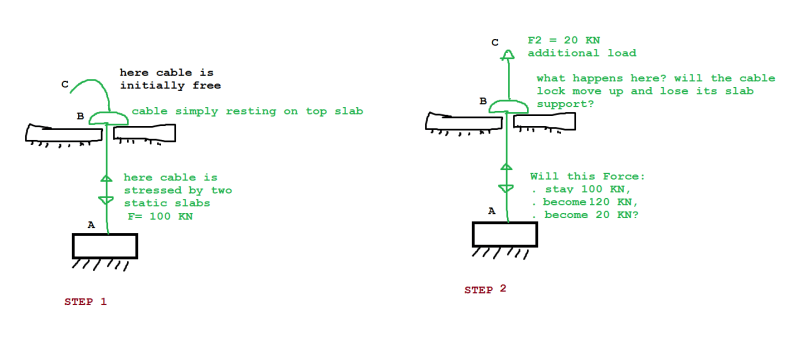A cable is stressed between two points, A on its first end, and B near its second end, by a force of 100KN, and a free portion near B remains without stress.
Please refer to attached image: Cable stressed before adding another force

Now B holds this 100KN by simply holding a lock attached on its cable. So if the cable is moved even by 1mm, this support vanishes.
Then the free end C is pushed with a force of 20KN. Now does force moves the cable away from its support at B, so the 100KN disappears? or does it adds to the 100KN to become a 120KN stress?
Please refer to attached image: Cable stressed before adding another force

Now B holds this 100KN by simply holding a lock attached on its cable. So if the cable is moved even by 1mm, this support vanishes.
Then the free end C is pushed with a force of 20KN. Now does force moves the cable away from its support at B, so the 100KN disappears? or does it adds to the 100KN to become a 120KN stress?
